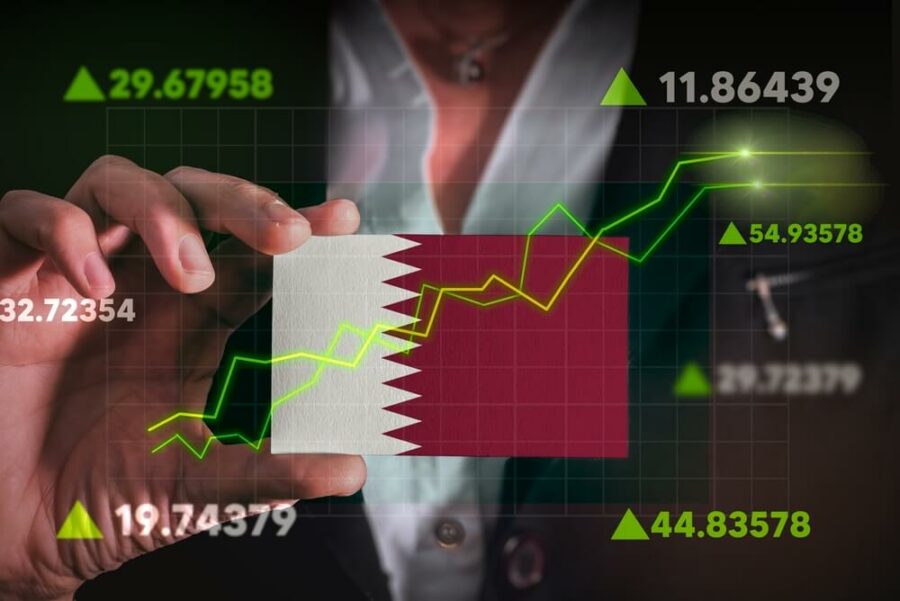Qatar’s budget figures surprised observers on Monday, recording more than two-thirds of the expected surplus for 2023 in the first three months of the year, thanks to a large influx of oil and gas revenues.
Qatar’s oil and gas revenues in the first quarter of 2023 supported the country’s general budget, leading it to a surplus of 19.7 billion Qatari riyals ($5.4 billion) from January to the end of March, supporting expectations of higher revenues and exceeding government estimates, according to data released by the Finance Ministry on Monday.
Qatar’s oil and gas revenues in Q1 recorded about 63.4 billion riyals ($17.41 billion), out of the country’s total public revenues, which amounted to 68.6 billion riyals ($18.84 billion).
In contrast, non-oil revenues fell by 10.5 percent to 5.2 billion riyals.
Qatar was the top exporter of liquefied gas in 2022 despite market volatility, as the volume of its exports of LNG reached about 81.2 million tons, an increase of 5.4 percent over 2021, due to the Russian-Ukrainian war, which caused a significant rise in oil and gas prices and led to disruptions in supply chains and Europe’s thirst for gas after gradual attempts to abandon Russian gas.
Read: Qatar’s $275 mn market-making initiative eyes more foreign investors
Qatar Energy has launched its final investment decision to expand LNG production for the world’s most competitive North Field to raise production capacity to 110 million tons per year starting in 2025, an estimated 43 percent year-on-year increase, with investments estimated at 105 billion riyals ($28.67 billion) and in partnership with international companies.
In April, Fitch Ratings raised Qatar Power’s outlook to “positive” and affirmed the company’s credit rating at AA-. It expects Qatar Energy’s distributable profits to fluctuate between QR55 billion and QR125 billion annually between 2023 and 2026.
According to a statement by the Qatari Ministry of Finance, the realized surplus was supported by the decline in expenditures and the increase in oil revenues by about 7 percent over the same period last year.
Data from the Ministry of Finance indicated that the average oil prices in the first quarter reached about $82 per barrel compared to $65 per barrel as an estimated price in this year’s budget.
Data for Qatar’s general budget for 2023 estimated the surplus at 29 billion riyals ($7.96 billion) for the whole of 2023, which means that about 68 percent of the amount was achieved during the first quarter of 2023.
During the release of this year’s budget, Qatari Finance Minister Ali Al-Kuwari indicated that the surplus is expected to go towards paying off Qatar’s public debt, strengthening the Central Bank’s reserves, and increasing the capital of the state’s sovereign wealth fund.
In April 2023, Qatar recorded a trade surplus of 22 billion riyals, according to a report issued by the country’s Planning and Statistics Authority in May.
The data reflected a 3.5 percent increase from March, while it fell 35.6 percent year-on-year.
Qatar’s 2022 budget achieved an actual surplus of 89 billion riyals ($ 24.44 billion), a record increase of 5462.5 percent, compared to the surplus achieved for 2021, which did not exceed 1.6 billion riyals ($ 0.44 billion).
Qatar’s oil and gas revenues during the fourth quarter of 2022 recorded about 59.3 billion riyals ($16.29 billion), compared to 44.7 billion riyals ($12.28 billion) in 2021.
But will this trend continue in 2023?
Despite Qatar’s positive performance in the first quarter, energy prices are currently under pressure, with natural gas prices falling to pre-war levels between Russia and Ukraine, and oil prices losing about 10 percent of their value since the beginning of the year. This raises questions about the figures for the remainder of this year in Qatar.
For more on Qatar, click here.








